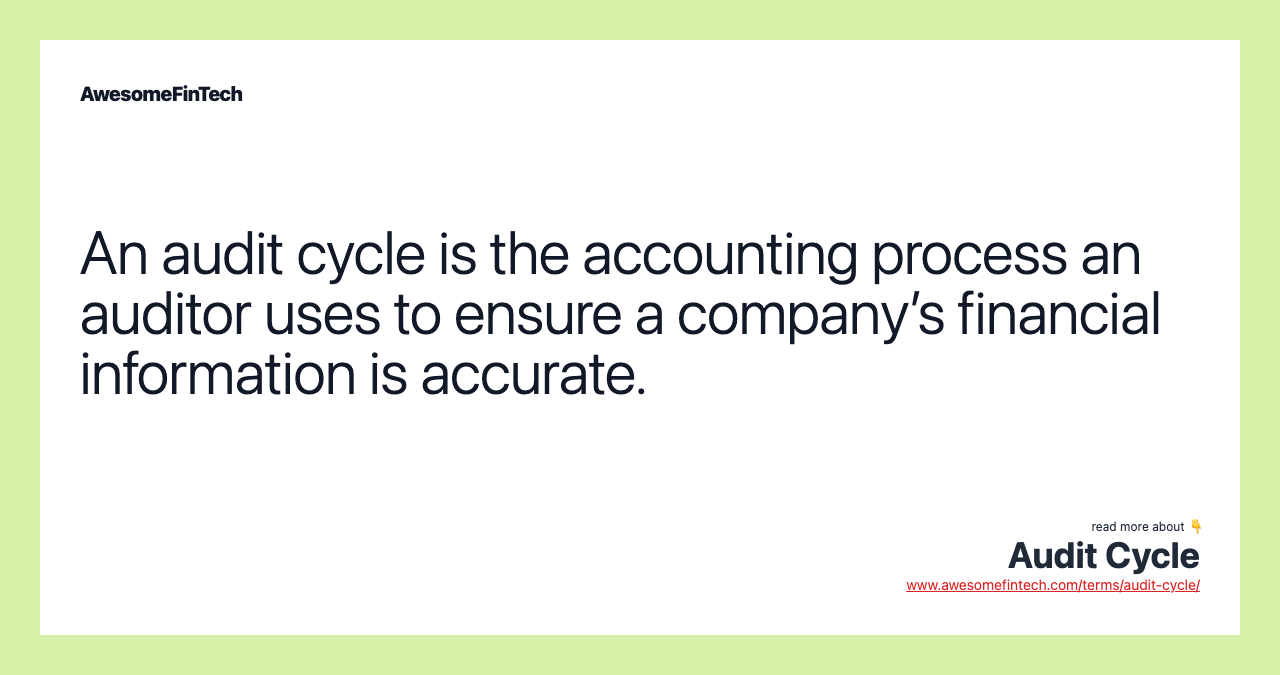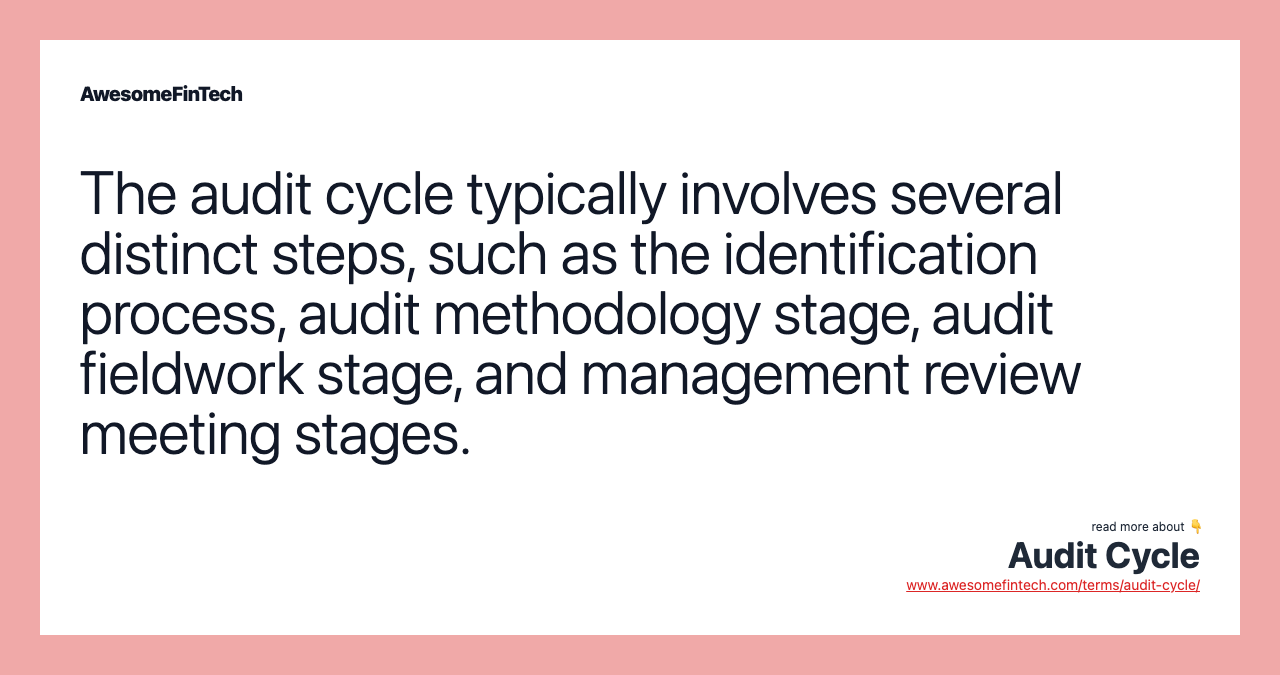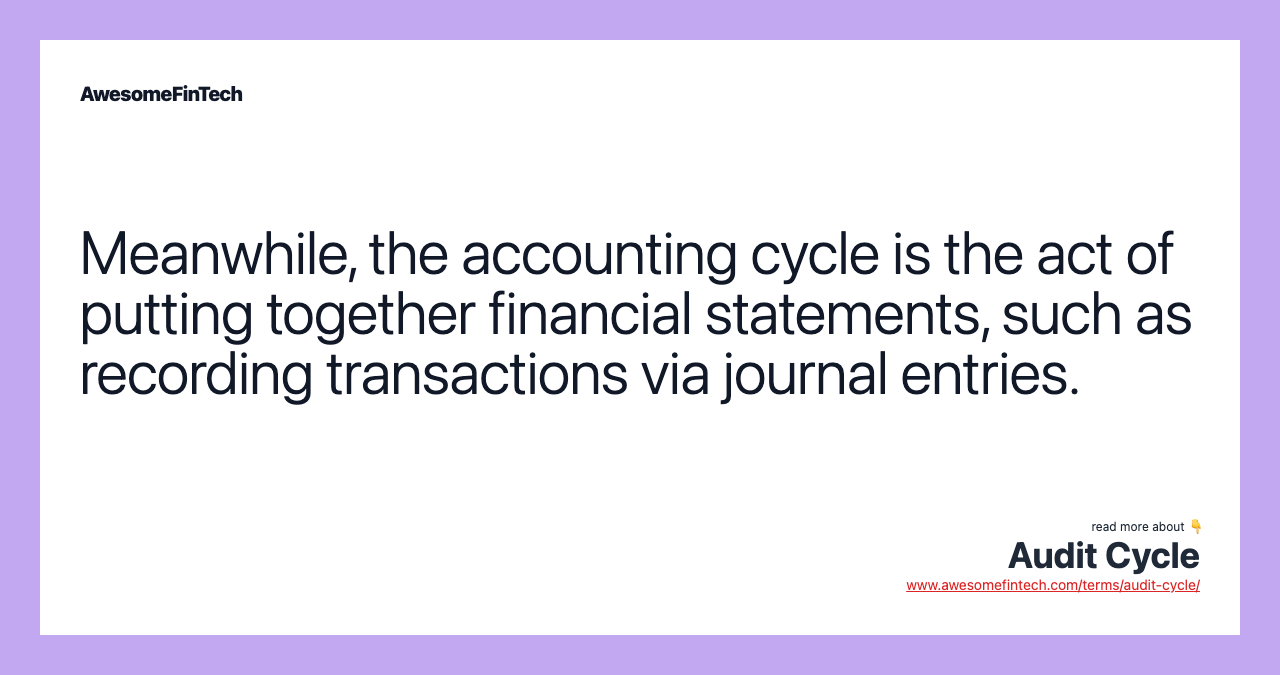Audit Cycle
An audit cycle is the accounting process that auditors employ in the review of a company's financial statements and related information. The accounting cycle has rules to ensure the financial statements are accurate, while the audit is a check on financial statements. An audit cycle is the accounting process that auditors employ in the review of a company's financial statements and related information. The audit cycle typically involves several distinct steps, such as the identification process, audit methodology stage, audit fieldwork stage, and management review meeting stages. An audit cycle is the accounting process an auditor uses to ensure a company’s financial information is accurate.

What Is an Audit Cycle?
An audit cycle is the accounting process that auditors employ in the review of a company's financial statements and related information. An audit cycle includes the steps that an auditor takes to ensure that the company's financial information is valid. The audit cycle can call for different tasks to be performed at different times — for example, inventory can be counted in October, and account receivables will be determined in November.





How the Audit Cycle Works
The audit cycle typically involves several distinct steps. First is the identification process, where the company meets with auditors to identify the accounting areas that need to be reviewed. Second, the audit methodology stage, where the auditors decide how the information will be collected for review.
The third step is the audit fieldwork stage, where the auditor will test and compare accounting samples. Fourth is the management review meeting stage, where the findings are presented by the auditors to the company's management team. This final step generally includes an audit report presented to management. This report will include discrepancies found in the financial statements of the company.
Special Considerations
Firms, particularly publicly traded firms, may employ outside accounting firms to perform audits and sign off on the audited company's financial health. Firms that perform these services are firms such as E&Y, KPMG, and PwC.
Being able to produce audited financial statements is a large part of certifying a publicly traded firm's financial health and supporting investors' need for information regarding the company’s financials. Auditors help identify key areas of high risk by looking at the internal controls system.
Audit Cycle vs. Accounting Cycle
The audit cycle is the process of ensuring financial statements are correct. Meanwhile, the accounting cycle is the formulation of financial statements. Putting together the financial statements is the key step in the accounting cycle.
The steps in the accounting cycle leading up to this include recording transactions via journal entries and general ledgers. An accounting cycle begins when a transaction occurs and ends when it’s included in the financial statements.
The accounting cycle has rules to ensure the financial statements are accurate. The audit is a check on financial statements. Meanwhile, the creation of computerized accounting systems and uniform accounting rules have helped reduce mathematical errors. Most accounting software today fully automates the accounting cycle, reducing errors, and streamlining the audit process.
Related terms:
Audit : What Is a Financial Audit?
An audit is an unbiased examination and evaluation of the financial statements of an organization. read more
Auditing Evidence
Auditing evidence is information collected to review a company's financial transactions, internal control practices, and other items needed for an audit. read more
Auditor
An auditor is a person authorized to review and verify the accuracy of business records and ensure compliance with tax laws. read more
Audit Trail
An audit trail tracks accounting data to its source for verification. Learn how companies use auditing to reconcile accounts and detect fraud. read more
Financial Statements , Types, & Examples
Financial statements are written records that convey the business activities and the financial performance of a company. Financial statements include the balance sheet, income statement, and cash flow statement. read more
General Ledger : Uses & How It Works
A general ledger is the record-keeping system for a company’s financial data, with debit and credit account records validated by a trial balance. read more
Internal Audit
An internal audit checks a company’s internal controls, corporate governance, and accounting processes. read more
Internal Controls
Internal controls are processes and records that ensure the integrity of financial and accounting information and prevent fraud. read more